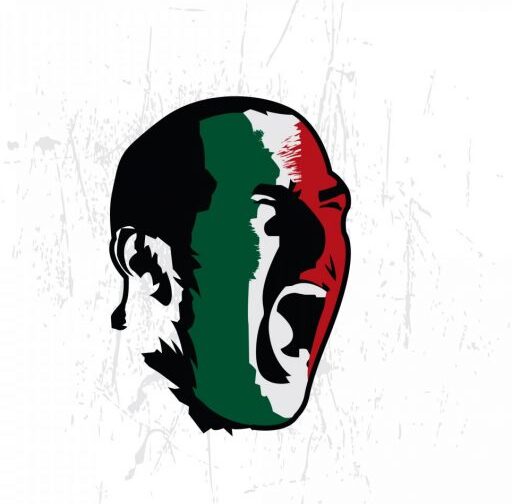When considering Serie A’s greatest overseas players, not many Irishmen will make the list. Liam Brady, however, deserves to be recognised as one of the best

There are very few Irish players to arrive in Italy and take the peninsula by storm. In fact, there aren’t many to have made the trip at all.
In all, just three Irish footballers have traded gold for red in the flag of the country they call home. The first, Paddy Sloan, made the move in 1948, having played for Arsenal, Manchester United and many others in England, to sign for AC Milan, before also spending some time with Torino.
The Republic’s record goalscorer Robbie Keane is the most recent Irishman to appear in Serie A, during a short-lived spell at Inter from 2000-2001.
It is the man that came between the two, though, that is still Ireland’s greatest export to Italy by some distance.
Liam Brady is one-of-a-kind in terms of Irish footballers. He was the player of his generation for his nation, and even since his retirement there are few players, if any, to wear the green shirt that can do what he could and so often did.
The Dubliner was cut from a different cloth to the majority Irish players; he possessed more ability in his left foot than most do in both combined.

In modern times, perhaps the closest player available to Martin O’Neill, stylistically at least, is Wes Hoolahan, although the two do not compare in terms of ability. Arsenal’s Mesut Özil is possibly the closest parallel that can be drawn in that regard.
His elegance in possession cannot be overstated and to continue drawing modern comparisons, Brady would not be out of place in the great Barcelona sides of recent years.
Brady’s career began in his hometown of Dublin, with St. Kevin’s Boys, before the talented playmaker, at just 15 years old, caught the eye of Arsenal. In London, Brady would grow from a prospect to a legend, before departing the Gunners nine years later having won just one FA Cup and finishing as runners up in the UEFA Cup Winners’ Cup.
When Brady left Arsenal in 1980, he chose to embark on an adventure that few Irish or British footballers undertake, joining Turin giants Juventus.
With La Vecchia Signora, Brady would go on to win back-to-back Scudetti, while winning the hearts of Juventini all over Italy. Despite having a vastly experienced and decorated side at his disposal, Giovanni Trapattoni has since singled out the Irishman for his importance to their success at that time.
“There is no doubt about it, he played a decisive role,” the former Juventus and Republic of Ireland boss said. “We might have had seven or eight players who were in the Italian squad, but it was Brady who brought experience and personality to the side. His role in midfield was vital.”

Unfortunately for all parties, Brady’s time with the Bianconeri was relatively short-lived, and would end after just two seasons.
As the 1981-82 campaign neared its end, it was made known to the Irishman that his time at Juventus was up. Michel Platini and Polish forward Zbigniew Boniek were on their way into the club, and with only two squad places available for foreign players, Brady would have to make way in the summer. However, there was still time for the midfielder to play a vital role in helping Juve retain their Scudetto.
Going into the final weekend of the campaign, Juventus and Fiorentina could not be separated. La Viola drew their final game away to Cagliari, while Juve were in Calabria to face Catanzaro. With 15 minutes to play, the reigning champions were awarded a penalty. Up stepped the Irishman and despite knowing his future lay elsewhere, and despite speculation that he might deliberately miss to spite his soon-to-be former employers, he cooly converted.
Brady’s spell at Juventus might have been up, but his time in Italy was not. Newly-promoted Sampdoria provided him with his next home, allowing him to take the No.10 shirt and team up with Trevor Francis at the Blucerchiati. Brady had the chance to extract some revenge over his former club early in the 1982-83 campaign, and took full advantage as he scored in a Sampdoria win over the Old Lady.
As he had in Turin, Brady won the hearts of the Genovese people – at least those in Blucerchiati households – but again he moved on after two years in which Samp failed to finish higher than sixth place.

His time in Italy continued after leaving the Stadio Luigi Ferraris, but never again reached the heights achieved with Juventus. The Stadio Giuseppa Meazza was next for Brady as he signed for Inter in 1984.
At the San Siro, Brady teamed up with Karl-Heinz Rummenigge, but could do no better than reaching a UEFA Cup semi-final and a third place finish domestically, failing to win any major honours with the Nerazzurri.
In 1986, Brady joined Ascoli, where his Italian love affair reached a sour conclusion. A year spent arguing over failed payments of wages with club president Costantino Rozzi, an unscrupulous businessman, marked the end of what was a much celebrated chapter of his career.
The story came to an end in 1987 when Brady returned to London to join West Ham United.
Liam Brady was a special player with phenomenal talent. Since his Italian sojourn, only one Irish, but plenty of British players have sought to follow in his footsteps, but few, if any of these, have reached the levels of adoration that he did.


